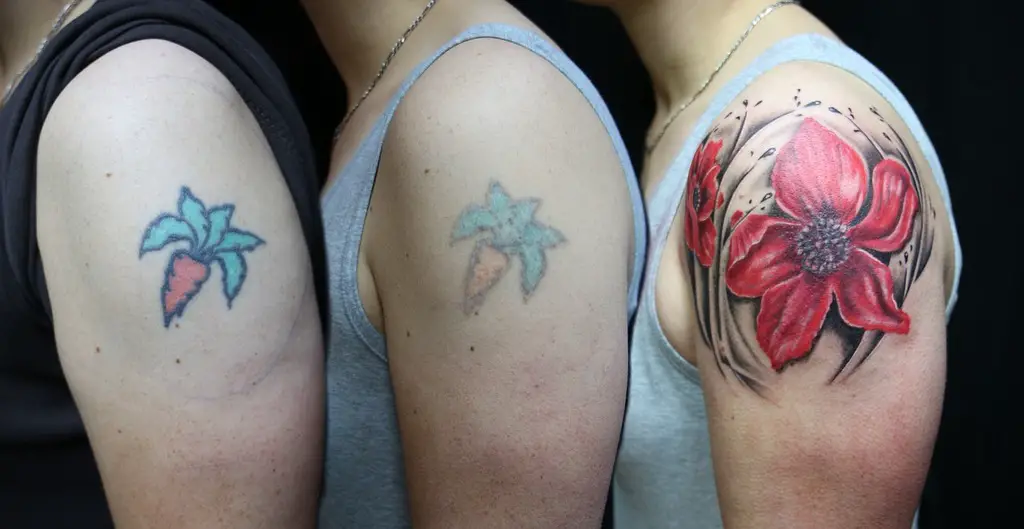If you’re pondering the question, “does skin go back to normal after laser tattoo removal,” you’ve come to the right place. This comprehensive guide aims to leave no stone unturned, addressing all aspects of skin healing post-procedure.

Table of Contents
Immediate After-effects on the Skin
Once you’ve undergone a laser tattoo removal session, your skin will exhibit some immediate reactions. The laser’s interaction with the ink and your skin causes temporary changes, which are usually part of the healing process. Here’s a breakdown of what to expect:
Redness: The laser can cause superficial blood vessels to dilate, leading to redness. This usually subsides within a few days.
Swelling: Your body’s natural defense mechanism kicks in, causing the area to swell slightly. Cold compresses can help alleviate the swelling.
Blistering: While not everyone will experience this, small blisters may form as your body reacts to the thermal heat of the laser. It is crucial not to pop these blisters to prevent infection.
Minor Bleeding: In some instances, pinpoint bleeding can occur but is generally not a cause for concern.
It’s essential to follow aftercare instructions, like applying antibiotic ointment and keeping the area clean, to minimize these symptoms and promote healing.
Does Skin Go Back to Normal After Laser Tattoo Removal?
The big question on everyone’s mind is whether the skin fully returns to its original state after laser tattoo removal. While the short answer is generally ‘yes,’ several caveats must be considered:
Texture: Most people will find that their skin’s texture reverts back to normal over time. However, in some cases, slight variations in texture may remain.
Color: Skin discoloration can sometimes occur after laser treatment. In most cases, this is temporary, but factors like the laser type and the skill level of the practitioner can impact the final outcome.
Scarring: While rare, improper treatment or aftercare can lead to scarring. It’s crucial to follow all aftercare instructions to minimize this risk.
In summary, while most people can expect their skin to return to a semblance of normality, individual results can vary.
Factors Affecting Skin Recovery
Various factors can influence the rate and extent of your skin’s recovery after laser tattoo removal. Here’s a closer look at each:
Age: Younger skin has better regenerative capabilities, which generally means faster healing.
Overall Health: Good health can speed up the healing process, as your immune system is better equipped to deal with inflammation and eliminate the broken-down ink particles.
Tattoo Location: Tattoos located on extremities like hands and feet tend to heal slower due to poorer blood circulation in these areas.
Tattoo Size: Larger tattoos require more sessions for complete removal and thus, a longer overall healing time.
Aftercare: Adhering to aftercare guidelines, such as avoiding sun exposure and keeping the area clean, can significantly impact your recovery.
Being aware of these factors can help you set realistic expectations and may even help you speed up your recovery process.
Check out these other articles…
Does Laser Tattoo Removal Work on Dark Skin? Detailed Answer
Why is Tattoo Darker After Laser Removal? Quick Answer
What is the Best Laser for Black Tattoo Removal? Answered
Bumps Skin After Laser Tattoo Removal: Causes & Remedies
Brown Skin After Laser Tattoo Removal: Comprehensive Guide
Should Skin Blister After Laser Tattoo Removal? Easy Answer
How to Treat Skin After Laser Tattoo Removal: Essential Tips
When to Seek Professional Advice
If you experience symptoms that seem out of the ordinary, like extreme swelling, persistent pain, or signs of infection (such as pus or an unpleasant odor), consult a healthcare provider immediately. These could be signs of complications that require medical attention. Prompt intervention can help prevent any long-term damage to your skin.


